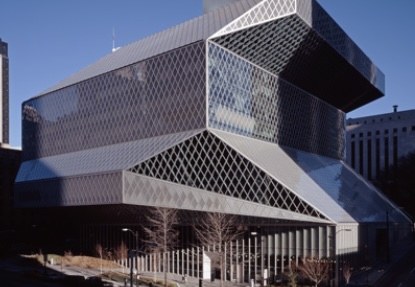UPDATE on the Sea-Tac Airport Cyberattack: Sep 18, 2024:
In a startling development, officials have confirmed that the recent cyber attack on Seattle’s Sea-Tac Airport was perpetrated by a Russian ransomware gang known as Rhysida. The group has demanded a ransom of 100 bitcoins—approximately $6 million—following the theft of sensitive data. While the extent of the breach is still being assessed, reports indicate that Rhysida has posted sample data online, which raises significant security concerns.
According to Cyber Daily, the leaked information includes a scan of a current passport belonging to a Port program manager, several tax forms containing personal information such as Social Security numbers and signatures, and a detailed map of Portland International Airport. This revelation highlights the potentially serious implications for individuals and the broader airport security network.
Rhysida claims to possess over 3 terabytes of data, and they have put this information up for auction, with bidding set to close next Monday. The uncertainty around the total volume and nature of the stolen data has left cybersecurity experts on high alert, as the auction poses a risk of further data breaches if the information falls into the wrong hands.
Authorities are currently investigating the incident and working to assess the full impact of the attack. They are urging affected individuals to monitor their financial accounts closely and consider taking steps to safeguard their personal information. As the situation develops, updates will be provided on both the investigation and the measures being implemented to protect public safety and security at Sea-Tac Airport and beyond.
Rhysida, believed to be a Russian group, emerged last year and was also behind the British Library cyberattack. In that October 2023 ransomware attack, Rhysida stole emails and documents containing employees’ passport scans and work contracts and demanded 20 bitcoins (about 600,000 pounds at the time) from the library. The United Kingdom National Cyber Security Centre CEO called it “one of the worst cyber incidents in British history.”
The Seattle Public Library has also been recovering from a similar attack in May.
Cyberattacks inflicted outages and cancellations for Seattle-Tacoma International Airport and the Port of Seattle this August, spreading to vandalism in suburban Kitsap County
On August 24, 2024, Seattle-Tacoma International Airport (SEA) and the Port of Seattle were struck by a coordinated cyberattack that created wide-spread delays and shutdowns. Days later, fiber lines in Kitsap County’s suburban Silverdale were cut, adding to the chaos, while an earlier ransomware attack on the Seattle Central Library had already underscored the vulnerability of critical infrastructure in the region.
These events, which continued to persist through Labor Day, have raised alarm about the increasing frequency and severity of cyberattacks in the region targeting public infrastructure and highlighting the urgent need for robust cybersecurity measures to prevent future incidents.
The August 24 Cyberattacks: Transport Targeted
The cyberattacks on August 24, 2024, targeted key systems at Seattle-Tacoma International Airport, the region’s busiest airport, and the Port of Seattle, which is vital for both commercial and passenger traffic. The attacks disabled phone systems, baggage handling operations, and even disrupted flight control systems, forcing several flight delays and cancellations. Many passengers were stranded as communication between airline staff, ticketing agents and gates, and ground operations, were severely impaired.
In addition to the chaos at the airport, the Port of Seattle, which handles a significant portion of the nation’s cargo traffic, faced operational slowdowns as its logistics and tracking systems were targeted.
The attacks were likely well-planned, with cybersecurity experts later estimating that they had likely been in the making for months. Initial investigations suggested that malware had been introduced into the system through a phishing email months before, lying dormant until it was triggered on August 24.
Silverdale Vandalism and Fiber Lines Damaged
Less than a week after the cyberattacks, another assault on regional infrastructure unfolded in Silverdale, a suburban community in Kitsap County, west of Seattle. On three occasions during a one week period, vandals physically cut fiber optic lines that provide internet and telecommunications services to the area. The vandalism disrupted internet access and phone lines for thousands of residents and businesses, affecting emergency services and further slowing recovery from the earlier cyberattacks.
While cutting fiber lines is a crude and less sophisticated method compared to cyberattacks, its impact on communication networks and internet infrastructure was just as devastating. Authorities initially believed the two incidents to be unrelated, but investigations later indicated that both were part of a broader campaign aimed at destabilizing critical infrastructure in Washington state.
The Seattle Central Library Ransomware Attack: A Prelude to a Larger Assault
In the weeks leading up to the August attacks, Seattle Central Library fell victim to a ransomware attack. Hackers infiltrated the library’s computer systems, encrypting crucial data and demanding a ransom payment in exchange for the decryption key. While public libraries may seem like an unlikely target, they are increasingly becoming victims of cyberattacks due to their often outdated security systems and large public-facing digital networks.
This attack crippled library services, blocking access to databases, e-books, and public computers. Seattle officials refused to pay the ransom, and cybersecurity experts were able to eventually regain control of the systems. However, this attack served as a stark reminder that cybercriminals are willing to target any vulnerable institution, including cultural and educational facilities, to extract financial gain or to disrupt societal functions.
The Growing Threat of Cyberattacks on Critical Infrastructure
The cyberattacks on the Seattle-Tacoma International Airport, the Port of Seattle, and the Seattle Central Library are part of a troubling global trend in which hackers—both state-sponsored and independent—are targeting public infrastructure to cause maximum disruption. Airports, seaports, public utilities, healthcare systems, and educational institutions have all been victimized by such attacks, underscoring the growing complexity of modern cyber warfare.
These attacks are designed to inflict significant economic damage and sow chaos. In the case of SEA and the Port of Seattle, the disruption not only delayed flights and impacted tourism, but also had serious implications for trade and the national supply chain.
Preventive Measures and Safeguards for the Future
In light of these attacks, there is an urgent need to bolster the cybersecurity defenses of public infrastructure. Below are several key steps that can be taken to prevent or mitigate future incidents:
1. Comprehensive Cybersecurity Audits
Regular cybersecurity audits should be mandatory for all public institutions, from airports to libraries. These audits would help identify vulnerabilities in existing systems and ensure that the latest security protocols are in place. Such audits should include penetration testing, where ethical hackers are hired to test the system’s defenses by attempting to breach them.
2. Advanced Threat Detection Systems
The use of artificial intelligence and machine learning algorithms in detecting unusual patterns of network activity can be a powerful tool in combating cyber threats. By monitoring for signs of malware or unauthorized access in real-time, these systems can identify potential attacks before they happen, giving security teams the opportunity to respond swiftly.
3. Multi-layered Security Protocols
Critical systems should be protected by multiple layers of security, including firewalls, intrusion detection systems, and end-to-end encryption. Two-factor authentication (2FA) should be enforced for all employees accessing sensitive systems, reducing the likelihood of unauthorized access.
4. Phishing and Social Engineering Training
Many cyberattacks begin with phishing emails, as was likely the case in the August 24 attacks. Regular training for employees on how to recognize phishing attempts and other social engineering tactics can help prevent these attacks from succeeding.
5. Improved Physical Security Measures
The fiber-optic line vandalism in Silverdale highlights the importance of physical security in protecting critical infrastructure. Increasing surveillance, adding barriers, and conducting routine inspections of vital infrastructure like fiber lines, power stations, and telecommunications hubs can help prevent physical sabotage.
6. Collaboration Between Public and Private Sectors
Governments, private companies, and cybersecurity firms must collaborate to create a unified front against cyberattacks. Sharing information about vulnerabilities, cyber threats, and attack patterns can help institutions stay ahead of emerging risks.
While not as pervasive as the CrowdStrike software vulnerability that had global repercussions the week before, the cyberattacks that hit Seattle serve as a wake-up call for the region—and the nation. As technology becomes increasingly integrated into every aspect of public infrastructure, the need for robust cybersecurity measures cannot be overstated. While it is impossible to prevent all cyberattacks, a combination of advanced detection systems, employee training, and strengthened physical security measures can greatly reduce their frequency and impact, ensuring that critical services remain resilient in the face of this growing threat. [247]
























